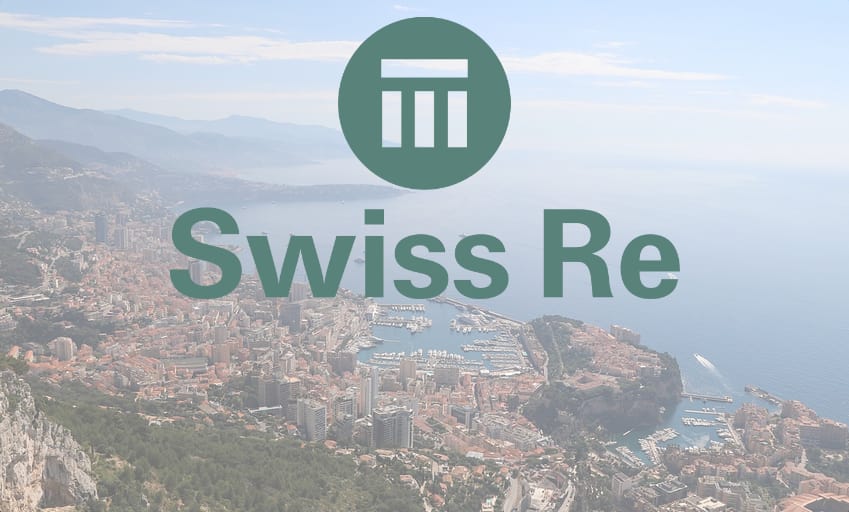Property cat hard market to continue, as supply-demand gap persists: Swiss Re

Swiss Re, one of the largest global reinsurance companies, said today that the hard market in property catastrophe lines is expected to continue, as a supply-demand disequilibrium persists and profitability remains challenged for the non-life re/insurance segment.
Announcing a new sigma study on the non-life insurance sector in Monte Carlo today at the annual reinsurance industry Rendez-Vous de Septembre event, the Swiss Re Institute said that while improved profitability will help to rebuild sector capital, it is clear that the cost of equity capital for the global non-life insurance industry has risen to the highest level in more than a decade.
The now much stronger profitability of the sector, thanks to harder non-life rates, enables the insurance industry to “increase capital and capacity to match growing demand as risks evolve,” Swiss Re explained.
As a result, the Swiss Re Institute said that the improving profitability in the non-life insurance sector is “set to fortify its vital role as a shock absorber.”
2023 is forecast to be a transition year for the non-life industry, thanks to the improved profits, as the industry continues to “adapt prices to an elevated risk landscape”, while higher portfolio yields will boost net investment income as well.
In fact, Swiss Re notes that higher interest rates on insurers’ investment results can far outweigh the associated higher cost of capital.
Jérôme Jean Haegeli, Swiss Re’s Group Chief Economist, commented, “Our analysis shows that non-life insurers’ profitability is set to improve strongly in the coming years as higher interest rates and rate hardening more than offset higher claims costs from persistent inflation.
“This will be vital to enable industry resources to grow at a rate that will match global demand for insurance protection.”
But, profitability aside, the industry will still be grappling with a gap between the supply of industry capital and the demand for protection, Swiss Re says.
“Non-life insurers’ profitability is expected to remain lower than their increased cost of capital in 2023. This suggests that further rate hardening and constraints on capacity are likely to continue throughout 2024,” the Swiss Re Institute believes.
Adding that, “Swiss Re Institute expects the disequilibrium in demand and supply of non-life insurance to persist, and thus a continuation of current hard market conditions, especially in property catastrophe lines.”
Demand for protection has risen on the back of increased natural catastrophe activity and inflation, which is resulting in higher replacement values.
Which Swiss Re says means there is a need for faster growth of industry capital, “to narrow large protection gaps worldwide.”
The gap has been growing, even in developed economies like the United States, where Swiss Re estimates that property and casualty insurance industry capital has grown by 5% annually on average for the past 10 years, but the natural catastrophe protection need has grown faster, at about 7% per year on average.
“Swiss Re Institute estimates the global protection gaps for natural catastrophes, crop, mortality and health insurance at USD 1.8 trillion in premium equivalent terms for 2022,” the company explained.
Swiss Re explained the role of reinsurance in supporting non-life insurers capacity to do more.
“In an environment where heightened risk awareness prevails, the role of reinsurance in providing peak capacity for the primary insurance sector is becoming increasingly relevant. This is also reflected in the fact that property re/insurance – the line covering the largest part of natural catastrophes – has seen premium volume growth of 4.3% in primary insurance and 5.9% in reinsurance over the last decade.
“Given higher demand, elevated risks and limited capacity, more efficient use of capital becomes key for primary non-life insurers. Reinsurers can offer primary insurers access to their balance sheet at costs below insurers’ capital costs as their portfolio is diversified across a broader range of geographies and risks.”
Gianfranco Lot, Swiss Re’s Chief Underwriting Officer P&C Reinsurance, added, “In the current capital-demanding environment, reinsurance can enable primary insurers to write new business more efficiently, provide certainty for legacy liabilities and support the growth of new business. The elevated risk landscape calls for more frequent adjustments to underwriting practices. Focusing on portfolio quality and margins as well as contractual clarity in the whole industry will be key in this respect.”






